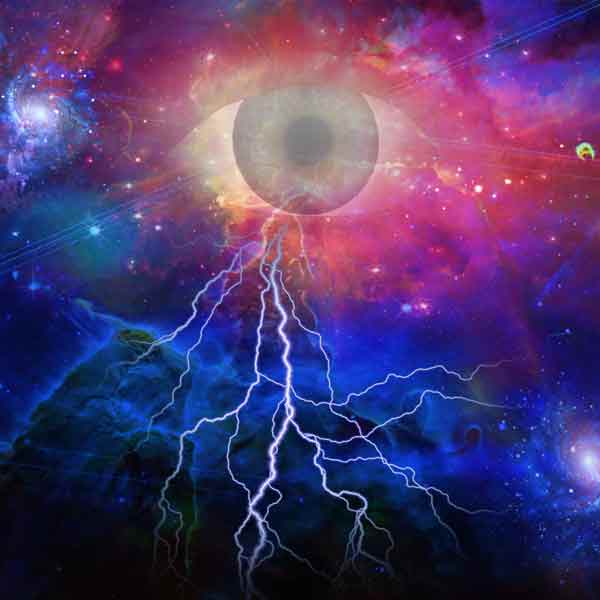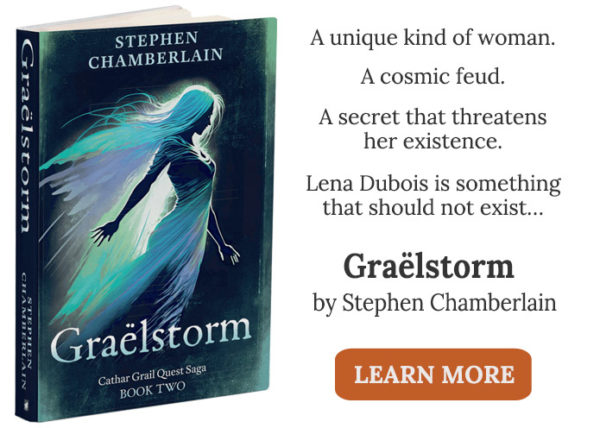“God is not the author of all things,
but only of good.” – Plato
Graëlfire’s world-building is not intended to endorse a religious view, though it draws inspiration from Gnostic creation myth.
Gnosticism is a theology that predates Christianity. It is an esoteric doctrine that aims to explain the presence of evil and suffering within the perfection of divine creation. Here is my broad-brush take on it:
Not One God But Two
Gnostics believe there is not one God, but two: one good and one bad. The good God is the author of all things good. The bad one is the creator of evil. They claim orthodox Christians worship the bad one.
The Gnostic source of creation is an impersonal Supreme Being called the Monad (“the One”), which is uninvolved in human affairs. This Monad emanated the heavenly Pleroma—a perfect, invisible, spirit realm of light and goodness, which it populated with eternal godlike beings called Aeons. Each Aeon is a manifestation of an aspect of the Monad’s divine nature. Sophia is the essence of the Monad’s Wisdom, Logos is the essence of its Reason, Aletheia is Truth, and so on. This thinking has echoes of Hindu theology whose many deities are manifestations of the supreme spirit, Brahman.
The Aeon, Sophia, set in motion the creation of the material realm when she emanated a being from within herself. As a lower divinity, she had the power to emanate, but possessing less divine power than the Monad, she spawned an imperfect, semi-divine creature: an egotistical godling called the Demiurge. Horrified at her flawed creation, Sophia cast him into the chaos of the void beyond the Pleroma.
Unaware of his true origin and using divine power inherited from his mother, the Demiurge created a lower spiritual heaven out of chaos and emanated celestial minions there called Archons to serve him. Believing himself to be the one Supreme God, the Demiurge then created the physical universe as we know it and made Adam to worship him. He breathed divine spirit (gained from his mother) into Adam, and then created woman so that the divine spirit in man would diffuse throughout human procreation, trapped within a physical body.
Gnostics believe death releases these imprisoned spirits, but ignorant of their higher divine origin, they remain earthbound to be reincarnated in another human body.
The Gnostic Jesus
Gnostic creation myth influenced some early Christian sects in the first centuries of the Common Era. It seemed to explain the incongruity between the wrathful God of the Old Testament and the forgiving, loving God Jesus spoke of.
Gnostic Christians believed an Aeon called Christos came from the Pleroma as a messenger to Earth. Incarnating himself in Jesus, his goal was to teach humanity its divine origin and show how it could free its spirit from the cycle of reincarnation by its own efforts. Only the spirit resident in those possessed of this enlightenment, or gnosis, and who lived pure and ascetic lives could escape the grip of the Demiurge and return to the Pleroma to be one with the Monad.
Gnostic Christians alleged the New Testament God that Jesus talked about was the long-forgotten Monad, the superior perfect God. They identified the Abrahamic creator god of the Old Testament with the Demiurge. In their minds the Demiurge was a delusional and vengeful imposter god, who rewarded or punished depending on whether man obeyed or offended his laws. For Gnostic Christians, proof of his imperfection was the failure of his messed-up creation—a world full of suffering, corruption and wickedness.
Gnostic creation myth influenced my work as a fantasy author.
Discover how Gnostic philosophy
influenced the world-building of Graëlfire:

Stephen Chamberlain is the author of the fantasy novel Graëlfire. He draws inspiration from the impact of landscape on myth, and the association of liminality with the supernatural and magic. Stephen lives in Switzerland.




Excellent breakdown. I would suggest emphasising the most import tenent of Gnosticism; the physical (material) is evil, while the spiritual (immaterial) is good. Otherwise this a great gnostic synopsis.
Thank you for your feedback. I’m pleased you found my blog post insightful.
Your point is well taken. The antithesis between the physical and immaterial is absolutely central to the gnostic credo. I touch upon this in “Graëlfire” in the context of Cathar beliefs and have integrated it as an element in the sequel’s world-building.
Stephen